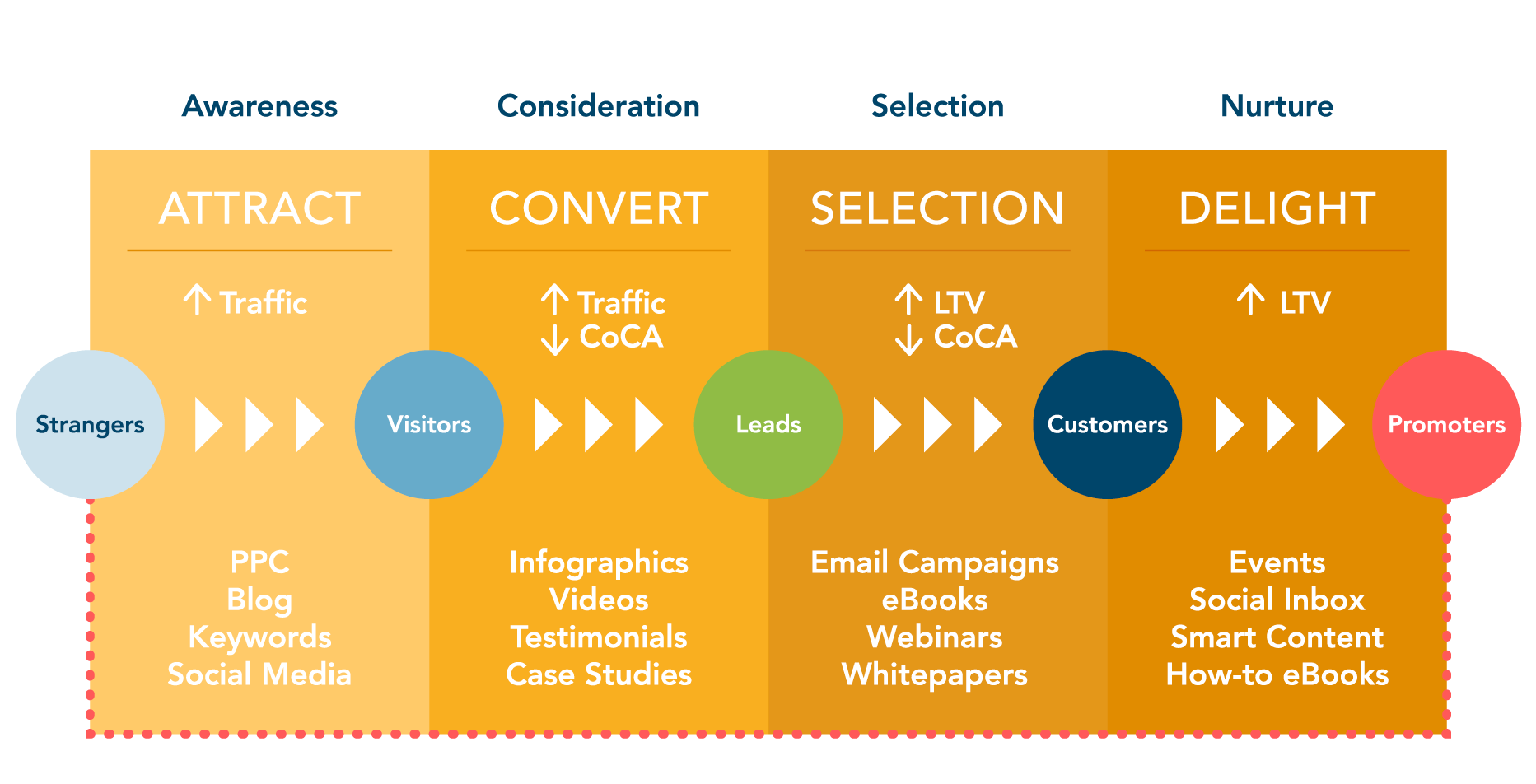
Inbound marketing is an increasingly popular methodology that yields powerful sales and revenue results—in theory. But for some marketers, the actual application of the ideas and concepts fall flat very quickly. What happened?
Inbound marketing can revitalize your company’s success, but it won’t be effective if you don’t follow best practices or implement a smart strategy.
Whether you’re getting started with inbound or have been doing it for some time with unimpressive results, you can start achieving audacious marketing and sales goals by knowing how to avoid these five inbound marketing pitfalls.
1) Too Much Focus on TOFU Content
Marketers love social media campaigns, focusing on SEO and looking for ways to “move the needle” with a tidal wave of new traffic. Traffic is great—I love a good Top Of Funnel (TOFU) campaign as much as the next marketer.
But too often when marketers begin to implement inbound marketing, they fall into the trap of just creating TOFU content. Those “X Top Tips” posts (yes, like this one) are great awareness builders, but they need to have content that takes the next step to help move a lead through the sales funnel.
Don’t just create an offer to fill a spot—make sure you create a series of content that shares a theme, to logically draw someone all the way through the funnel and into your sales team’s lap.
2) TOFU in MOFU’s Clothing
Many marketers think they have incredible Middle of Funnel (MOFU) content that they’ve placed behind a form. In reality, much of the MOFU content may be perceived by your prospect as less valuable TOFU content. This disconnect between the marketer’s perception and the actual needs of the prospect can lead to huge gaps in content at each stage of the buyer’s journey.
3) Content Doesn’t Match the Buyer’s Journey
In simple terms, whenever we make a purchase, we go through a journey to get there. We become aware of a need, research and refine our need, and finally make a selection. Throughout that process we ask myriad questions that reflect our understanding at that moment in time.
For example, take the most common question, “How much does it cost?” This question has a very different meaning, and requires a very different answer, at each stage of the buyer’s journey. In the Awareness stage, you simply want to create alignment between your perception of cost and your budget and what the market is demanding. In the Consideration stage, you’re refining your budget to specific features or solutions. In the Selection stage, you’re hammering out the exact costs with taxes, fees, and any hidden costs.
To successfully nurture your leads through the sales funnel, it’s critical to map out the buyer’s journey and create content that gives the right information at the right time.
4) Right Content, Right Channel, Right Time
If you need to nurture leads through the funnel, how much of your effort should you spend on social media, or PPC, or webinars? Marketers tend to miss out on allocating the right time and effort to the channels and content that will deliver the highest returns.
In the chart below, you can see in general terms which types of content work best in each stage of the buyer’s journey.
Make sure you map out your persona’s buying journey to identify which tactics are the most beneficial. A checklist to one persona might be a TOFU while for another it might be a MOFU. Identify the expectations of your persona through the buyer’s journey.
5) Marketing Doesn’t Feed Sales the Right Type of Leads
When marketing and sales teams discuss the quality of leads, conversations can heat up quickly and end by canceling the next marketing and sales meeting.
As marketers, we can forget that while we may be very interested in a prospect’s social media activity, that doesn’t help the sales team close a deal. If we spend all our time and effort on creating forms that capture the wrong information, we’ll waste everyone’s time. Instead, start with a list of must-have items from the sales team to identify what information to collect.
Your sales team can’t close deals with the wrong kinds of information. But if you get aligned on the must-haves, you can be the sales team’s most valued resource. Instead of fighting with you, you’ll find them starting to fight for you!
Read more:

